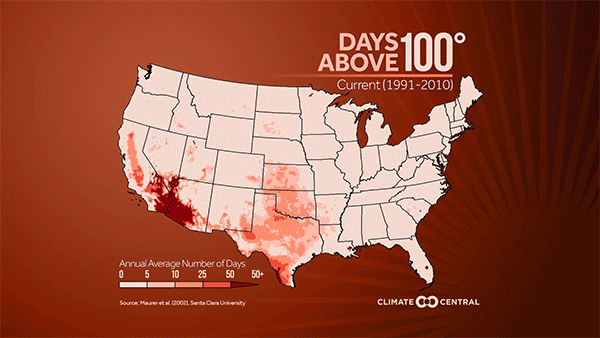

Father’s Day and the U.S. Open are reminders that golf is a big economic driver. One trade study indicated that golf contributes more than $80 billion a year to the U.S. economy. And while golfers are infamous for playing in less-than-ideal conditions, extremes like heat, drought, and heavy rain that come with climate change are impacting the game - both the players’ comfort and the course conditions. The U.S. Golf Association, golf’s governing body in the U.S., has supported research into turfgrasses since the 1920s. Research also reveals that the game has a climate impact of its own, due mostly to how turfgrasses and water are managed. More efficient water and turf practices can help limit the amount of greenhouses gases like carbon dioxide and nitrous oxide that are released into the atmosphere.
In response to heat and drought in the 1980s, USGA bolstered its research funding, leading to development of more resilient turfgrasses. Those discoveries have been beneficial to the game. A natural fungus has increased the heat and drought tolerance of some grasses like tall fescue, which are used on the course rough. Buffalograss, which has a naturally high tolerance for drought but has not been used much because it takes a long time each spring to go from a dormant brown to a vibrant green, is now being incorporated as improved varieties are developed. New versions of salt-resistant grasses, like seashore paspalum, are also being produced. Their tolerance allows use of recycled water for irrigation, which has more salt content than fresh water. Fifteen percent of courses in the U.S. are taking advantage, incorporating recycled water into their irrigation practices. Salt-resistant grasses also survive periodic ocean flooding, which is becoming more common on coastal courses as sea level continues to rise.
Golf courses are going green and saving money in other ways, too. Some are using solar energy to offset or even cover their maintenance costs. At Candler Hills in Ocala, Florida, enough energy is generated by their solar array to cover all maintenance power needs while sending some energy back to the electric grid. The course expects the solar to pay for itself in just over a decade and save over $200,000 in electrical costs over the lifespan of the panels. These types of adaptations can make the links even more green in the future.
Methodology: USGA provides a list of their numerous sponsored academic turfgrass studies. Additional research information can be found through Rutgers University and Michigan State University. Thanks to Alfred Turgeon, Professor Emeritus of Turfgrass Management at Penn State for an overview to turfgrass management.

